With Mozilla pulling funding out of Hubs, I wanted to take some time to reflect on my work with the Hubs project over the last 4+ years.
Hubs, is an open-source 3d platform for building social web experiences like these
Hubs and its instances have hosted millions of social spaces across the web over the years where people meet, have parades, avatar fashion shows, educational experiences, explore trippy art installations, host conferences and more.
It’s not a Zoom replacement or substitute, it’s really a different category of the web that will continue to evolve.
There is nothing exactly like Hubs out there. It is the only open-source, social 3D, VR-compatible, functional, extendable web thing available that lets you self-host and own everything. If you haven’t read the history behind Hubs, how it was started by Mozilla and the vision/ethos of the founding team, I highly encourage you to read “The Path to Mozilla Hubs” by Greg Fodor before making assumptions or armchair product strategy remarks:
The Path To Mozilla Hubs.
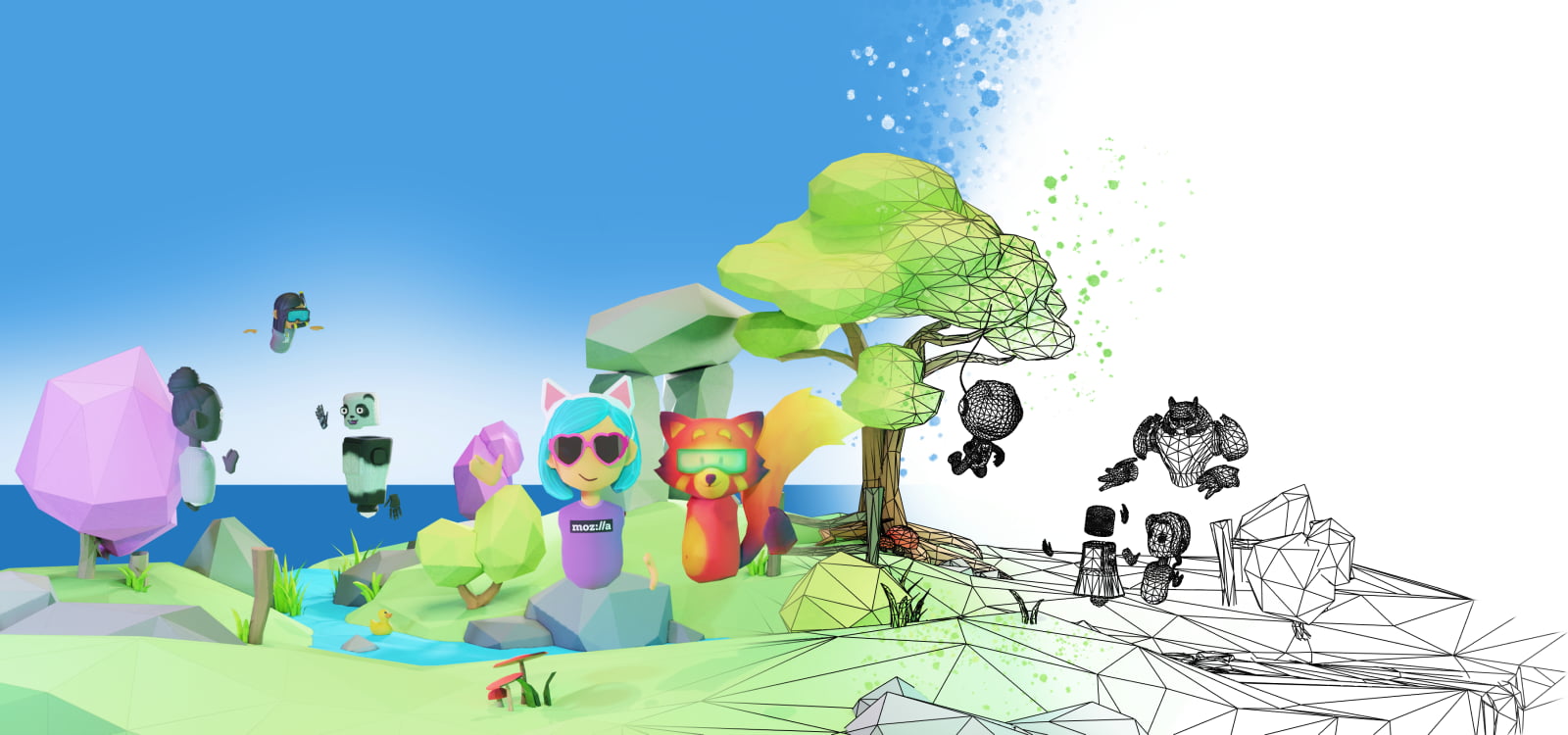
Image by designer Dan Fernie-Harper with 3d art by Christian Van Meurs, Jim Conrad and other contributors.
My personal journey with Hubs began when I was looking for solutions to help non-profits trying to raise funds during Covid. Since many of these organizations were suffering as a result of IRL meetups being impossible, I thought we may be able to remedy this partially in a novel way with the spatial web.
People could jump into the experience with a web link and with a variety of hardware and wouldn’t have to download special software.
I started a lean events business where I produced events with my staff-of-one company I called JoinVR for non-profits powered by Hubs. If you have used Hubs a bit or been to many events in Hubs, you may have seen the JoinVR camera avatar before. The camera was born from a need to give participants the sense that the event was being recorded and add to the excitement of having a silly time in a web page with others.
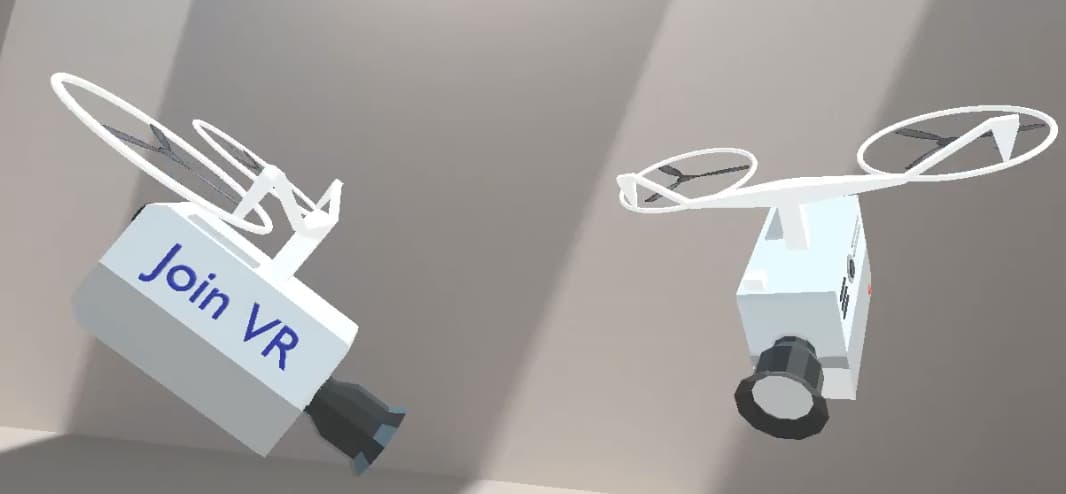
This was one of my first community contributions and the first avatar for Hubs I ever put together in Blender.
One event I hosted on my Hubs-powered platform was for Charity Navigator, a non-profit that helps people donate to charities. They announced a large donation from the Bill and Melinda Gates Foundation and I remember being ‘there’ in that moment with the team ‘dancing’ in celebration moving their avatar heads around and throwing things in the room.
Teams like Charity Navigator were looking for alternatives to Zoom to give them some variety during Covid. Managing basic events worked well with everyone having cabin fever and wanting to try something new but once restrictions around Covid lifted, there was less willingness to experiment and no substitute for IRL.
I abandoned JoinVR in favor of contract web development and 3d asset creation picking up jobs wherever I could. There was still a lot of good work to do in education and niche communities and I found myself doing better financially contracting for those companies than hosting events for non-profits.
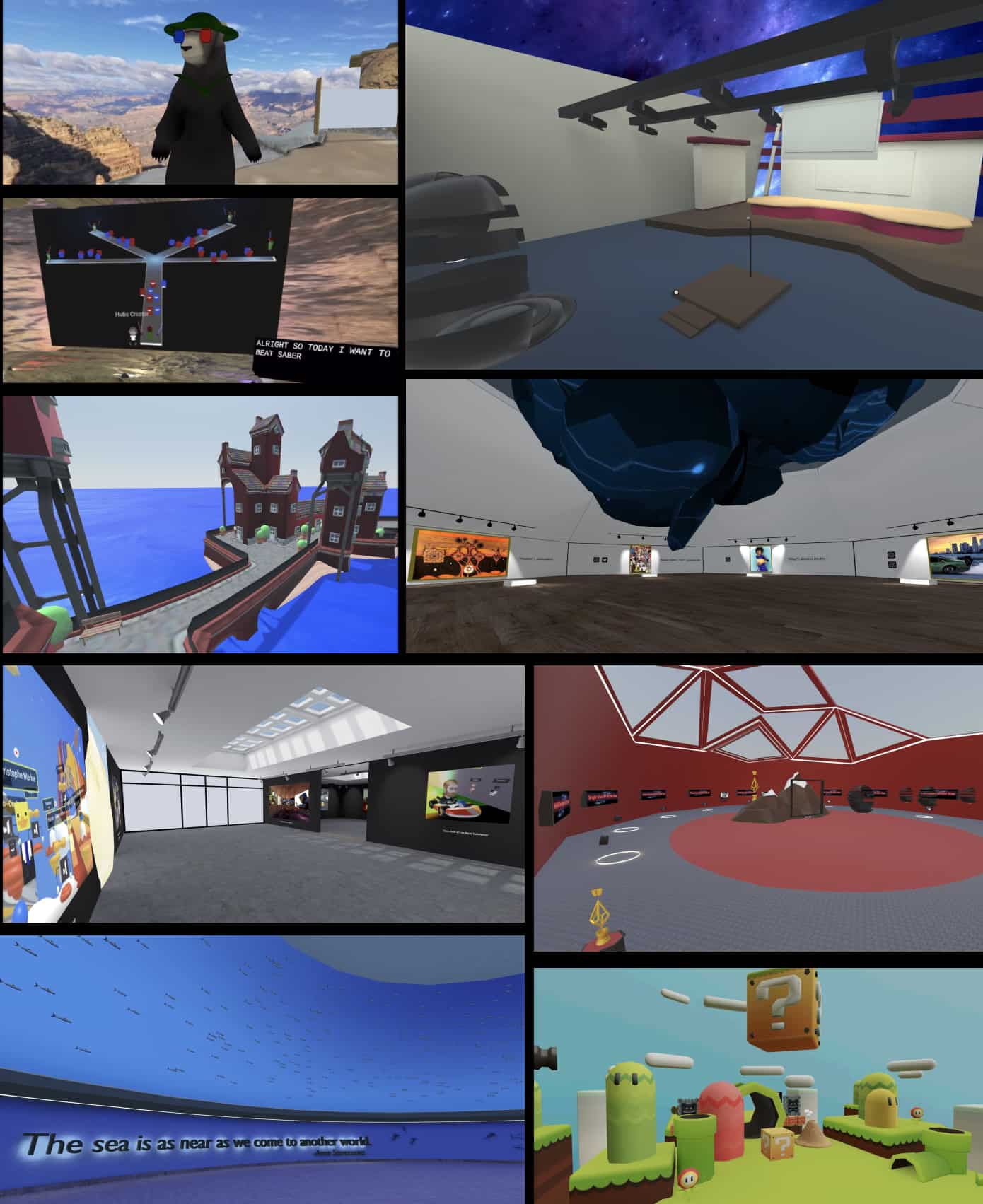
Some of the spaces I composed and created included watch parties for the WebXR Poly awards.
I continued to work as a contractor helping others with Hubs, building spaces, avatars, organizing events, and coding on the front end.
One of the most popular requests in Hubs: add jumping. With a few code edits I had a pretty good jumping function with a jumping sound on my Hubs client.
You can see more video and a selection of my custom client work here
This was all still before Mark Zuckerburg declared the Metaverse to be a thing and when Meta was still Facebook.
I was hosting meetups with the Hubs Creators Meetup, a group I founded to bring together the best creators in the Hubs ecosystem so we could share our knowledge and get to know one another. We had some amazing people come share and I’m so grateful to all who presented. I’m not exaggerating, these were some major pioneers like Fabien Benetou, webXR consultant to the European Parliament Innovation Lab, artists T. Shawn Johnson, Ronald Ho Hip, The Immerse Space and Space Popular Teams, and many others doing cutting-edge art and dev on the web.
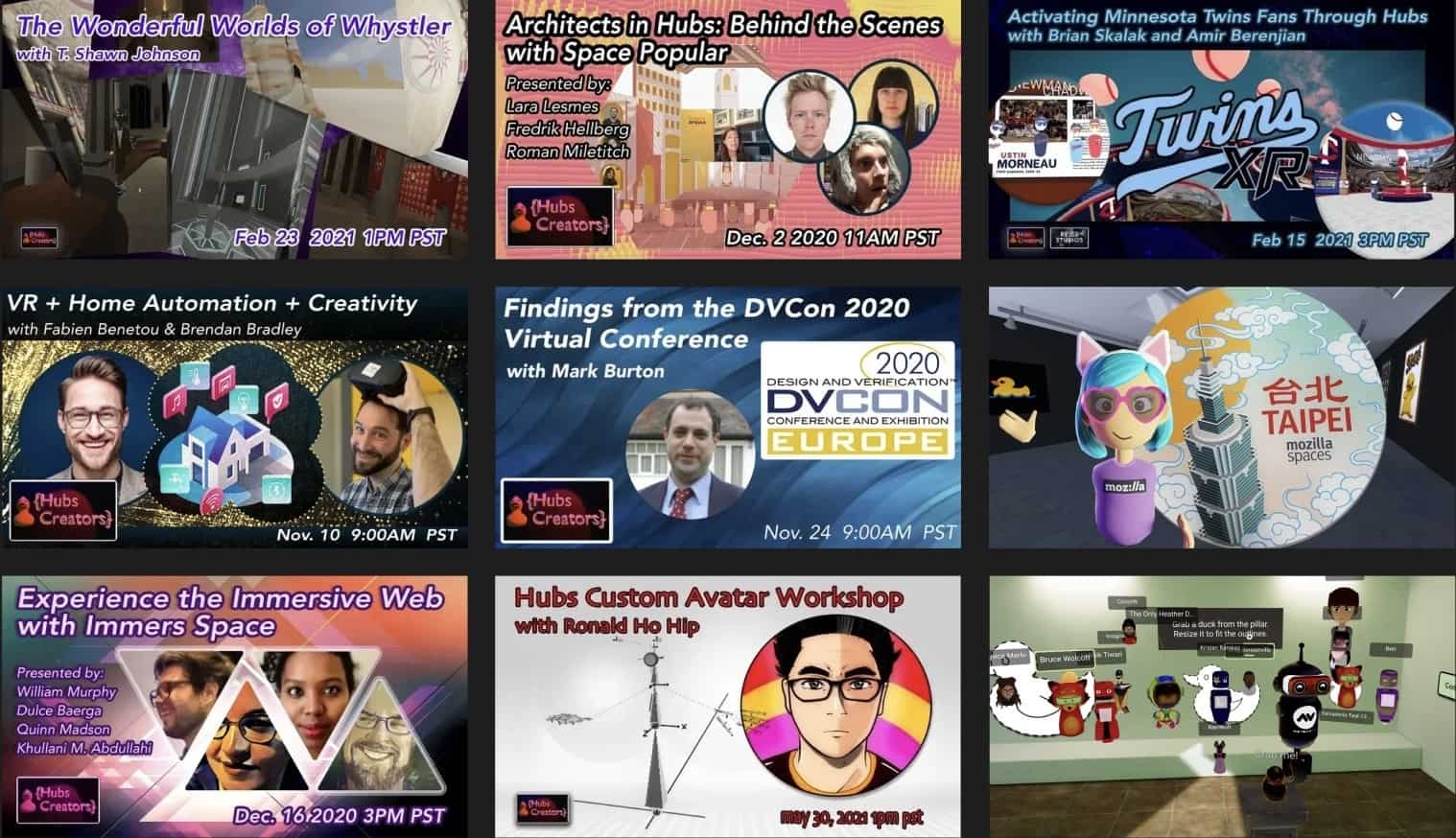
Join the Hubs Creators Meetup Group here
I was so passionate about Hubs and building experiences with it that I actively looked for ways I could work on Hubs full time.
I applied and was rejected for every open position they posted. For one job, I was lucky enough to get interviewed by several people working on the team and although I didn’t get the offer, it exposed my work to key team members.
I kept working on the client, making contributions where I could and helping people in the community.

Some of my contributions and fixes to the projects front-end and localization.
Luckily, some people on the team recognized my work, for which I’ll always be incredibly grateful. Their support directly led to a fantastic opportunity: a six-month contract position with the Hubs team, my dream job. I dove headfirst into Hubs, working harder than ever before. From there I was able to reapply, and go through the whole interview process (again) against very tough competition for a full time spot as Community Manager.
I wrote somewhere around a hundred pull requests/articles across the Hubs ecosystem, contributing code, documentation, and creator labs posts to the Hubs project.
The work for me largely centered around advocating for the community and working to bring valuable programming to us like Creator Labs, our community blog. Creator Labs served as the primary vehicle for Hubs marketing, gathering more impressions and views than a niche webXR blog should and producing something like twenty community authors. Thanks to our team and community contributors, the blog worked to deflect support questions, help upskill Hubs creators faster, and showcase the many exciting projects in the Hubs ecosystem.
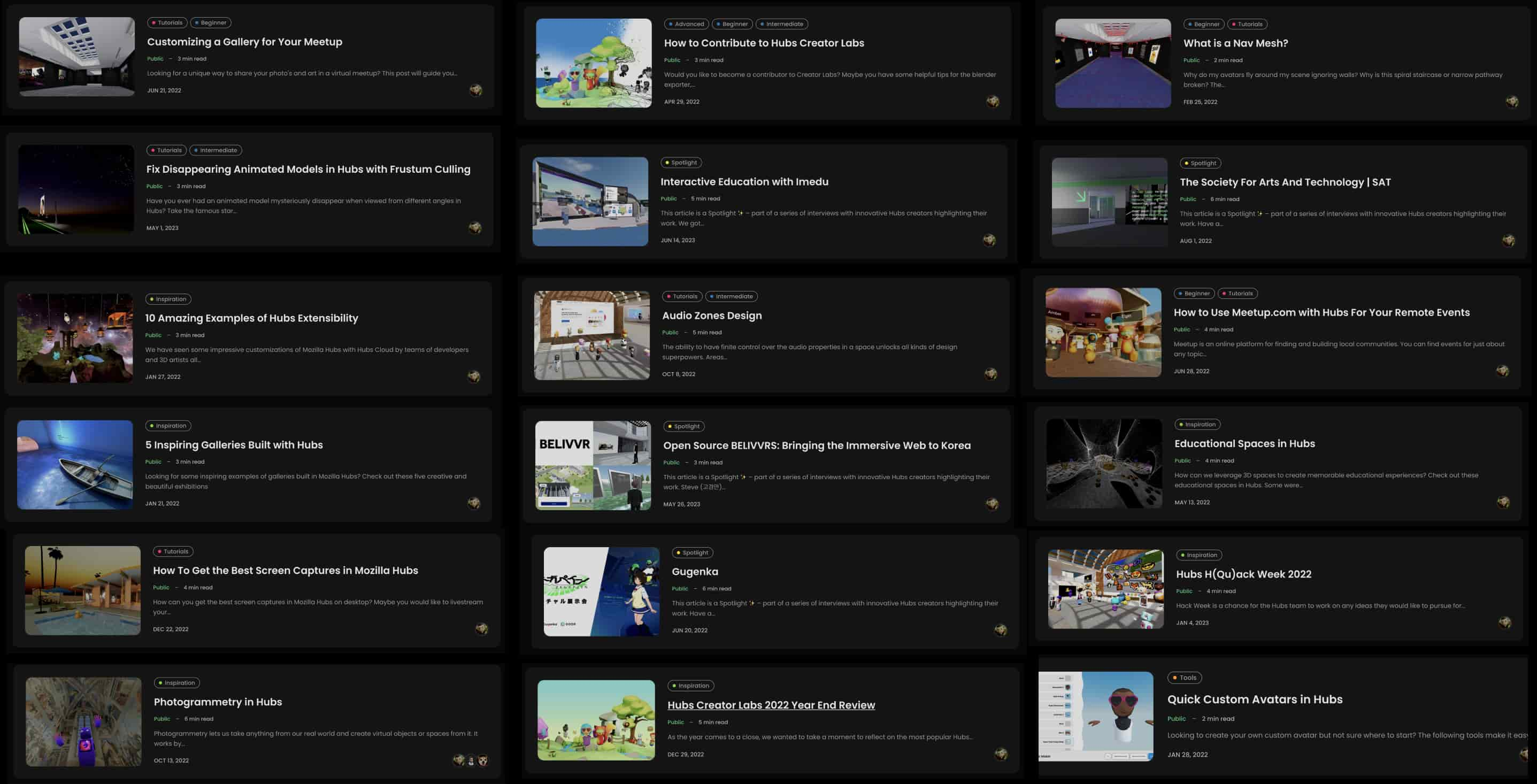
A few of my favorite articles I worked on for Hubs Creator Labs
Another program we only ran once and I wish we could have continued is the HAIR program. “HAIR”, an unfortunate acronym for “Hubs Artist in Residence”, helped to produce new artistic works, bring in new creators, and open source their work to the community and beyond with grants for artists to come play in Hubs.
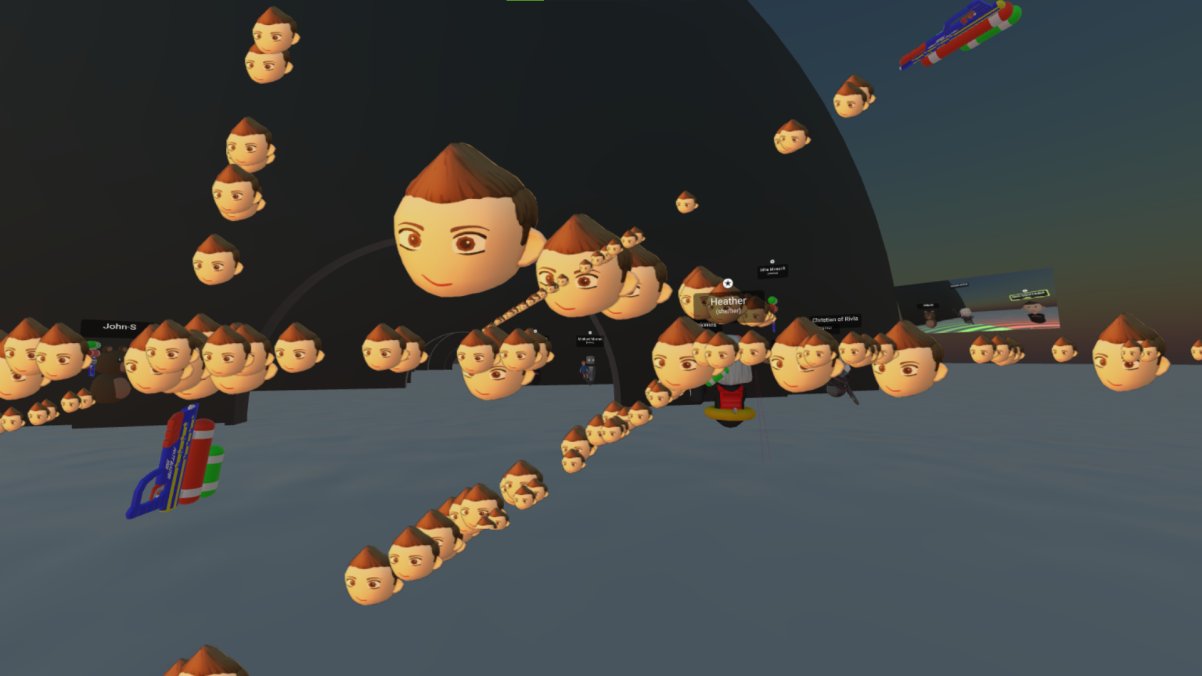
Community maintainer Imaginer created this unique gun that shoots my head at people as a gift when I left the Hubs team.
Over the last four years, I’ve responded to thousands of inquiries about Hubs across email, Github, Discord, Twitter(X), Linkedin, learned to tweet from Amber Osborne, and published dozens of showcase and support articles.
The Hubs community thrived thanks to a collaborative effort of a cross-functional team and the continued investment in community at all stages in Mozilla-led Hubs. I want to acknowledge the leadership of Liv, John, and Imo. The developer team, including Manuel, Greg, Geng, Takahiro, Robert, Dom, Brian, Robin, and Brandon all who provided crucial technical support and community leadership. The artistic vision and leadership/support from Jim, Dan, Matt and Christian. Jim’s leadership in building community should especially be recognized as its a rare gift and asset for community managers working on a project like this. Some memorable moments with the Hubs design force and amazing assets for Creator Labs and coordinating UX research. Additionally, I’d like to recognize the contributions of previous and following community managers, the legendary Elgin McLaren and Michael Morran.
As of now, I’m still working at Mozilla as a Senior Community Program manager and left the Hubs team before Mozilla divested in Hubs.
I keep telling people not to worry about Hubs. It’s not dead, it’s just going to change. Luckily Mozilla built Hubs open-source with a strong and passionate community that have all the tools they need to take it to new heights. If the community sticks together, Hubs will remain a great tool for creative expression, education, and the open spatial web.
/duck to make a duck and I’ll see you on the spatial web!